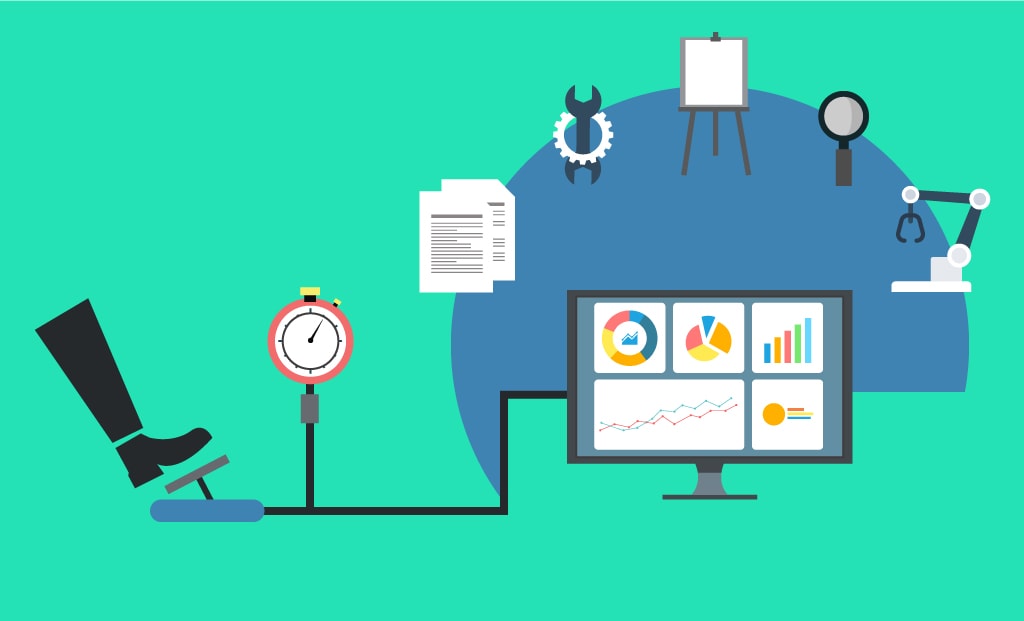An ERP implementation involves in-depth planning along with the involvement of the entire organization and the ERP vendor. During implementation, maximum efforts and focus is given towards its success. However, it is important to understand that the real work begins post ERP implementation when the organization starts working with the integrated ERP system.
As employees continue to work the ERP, they are bound to face teething issues, also identify scope for improvement and suggest new functionalities. The resistance to change increases subsequently as they are out of their comfort zone, thereby causing operational issues and even business disruptions. If unchecked, they will eventually revert to old methods and practices, system workarounds which defeats the overall purpose of an ERP implementation. All this can be easily avoided if a robust post-implementation plan is in place even before the implementation has begun. Let us see at what a post implementation plan should consist of.
Post-Implementation Process Audit
A post implementation audit is done after the ERP is implemented throughout the organization and new business processes are well in place. An audit is absolutely critical to find out what worked during an implementation and what did not, along with the reasons.
An audit ensures that you,
- Compare the implementation plan and achieved results to find out what went right or not as per the plan.
- Investigate in case of deviations and derive correction steps.
- List down enhancements for future evolution of the ERP within the organization.
- Derive comprehensive training plan to promote learning and ERP adoption.
- Realize complete potential and strategic benefits from the ERP for quicker ROI.
Robust Documentation
An ERP implementation involves introduction of new software, business processes and workflows. For floor personnel who have limited IT background & knowledge, it gets very difficult to adjust to new working methods.
There are chances that key personnel who were a part of the ERP implementation team would have left the organization. With them, goes their in-depth knowledge regarding the implementation, new workflows and business processes, thereby leaving a huge knowledge void.
Also, post-implementation, the support from the ERP vendor would be limited as per the contractual agreement. Therefore, to tackle any post implementation issue, a comprehensive documentation needs to be prepared during the implementation.
The documentation should involve detailed Standard Operating Procedures (SOPs), technical details, detailed software help guide, instructional videos/webinars and much more. These resources will make life easier for the entire workforce of the organization as they will have a ready reckoner to refer at all times.
Most importantly, the documentation should also contain key processes and decisions taken during the implementation phase so that it can be used to further evolve the ERP system and elongate its shelf life within the organization.
Regular Training
As the ERP evolves with the organization’s growing business management needs, its employees too need that upgrade to keep up with the integrated system. Therefore, any upgrade within the ERP software, business processes and workflows will be included in the regular training program plan. This will quicken ERP adoption among the employees and reduce business disruptions. The training can be in the form of video tutorials and classroom sessions (if required) so that they can be used for later reference too.
Regular Maintenance
Just like the manufacturing equipment and machines need regular maintenance to prevent breakdowns and idle time, even ERP systems and applications need regular maintenance in the form of software updates and bug fixes. These software updates can be reactive and proactive based on the bugs identified by the manufacturer and proposed enhancements required in the ERP. Both the ERP vendor and the manufacturer would need to come up with a scheduled software release plan to ensure that business does not get disrupted owing to a software update gone wrong. Also, a detailed training plan will also accompany the release plan to ensure that personnel are adequately trained on new features.
ERP Governance Planning
Post implementation, there may be changes within the ERP as per the requirement of a particular department. These changes can be related to nomenclature, workflows, business process, application interface etc. and cannot be implemented without consulting other departments as it might disrupt the functionality for other them. Therefore, a robust governance plan should be in place where it will highlight the process of adding new functionalities and modifying existing ones within the ERP. The IT team or ERP vendor responsible to bring about this change will follow the governance structure to streamline change requests, prioritize them based on importance and implement without effecting any other functionality or department functioning. Also, this structure will keep a track of changes being done on the ERP post implementation and provide adequate trace-ability information.
ERP Evolution Planning
Evolution of the ERP software should be an integral part of the post implementation plan. As the manufacturer looks to expand their operations and scale up their business, they would want the ERP to adapt to their growth and changing operational structure. A robust product road map should be in place to tackle the ever-growing needs of the organization and the ERP vendor should be an integral part of this.
Tending to Backlog Customer Requirements
During the course of ERP implementation, there might be a number of order requests that have been kept in the back-burner, specially in the initial phases of implementation. These requirements would have been non-feasible at that point of time and therefore de-prioritized or delayed, of course after communication with customers. Post implementation, these requests can be looked into and re-initiated to avoid losing them to your competitors. This would have to be included in the post-implementation plan and not lose sight of it.
In a nutshell
An ERP implementation is not a one-time activity but an on-going evolutionary process where the ERP evolves and grows along with the organization. Manufacturing organizations need to pay critical attention to this fact.
The high Return on Investment (ROI) of an ERP implementation depends on how they improve their workflows and business processes in the long run and grow along with the ERP. And this can only be done through,
- Meeting ERP user’s knowledge needs through continuous training, documentation and communication
- Set up ERP governance structure and streamline continuous system changes, process improvements, ERP maintenance, new feature inclusions etc.
- Manage in-depth documentation regarding implementation, process changes for future reference and training
Download and Read our latest Whitepaper
‘An ERP Solution Provider’s Guide for Manufacturers’ that details every step right from ERP selection/evaluation till post implementation.







5 Responses
Just exploring your services
Non ut quae sit expedita adipisicing minima amet facilis possimus et quae nihil
Omnis deserunt ullam exercitationem temporibus
Voluptas quam Nam quis omnis eveniet voluptatem Doloribus dolore doloremque facilis voluptatem Quis veniam labore accusamus et
Corporis dolorem exercitationem quia neque obcaecati quo sed autem dolor